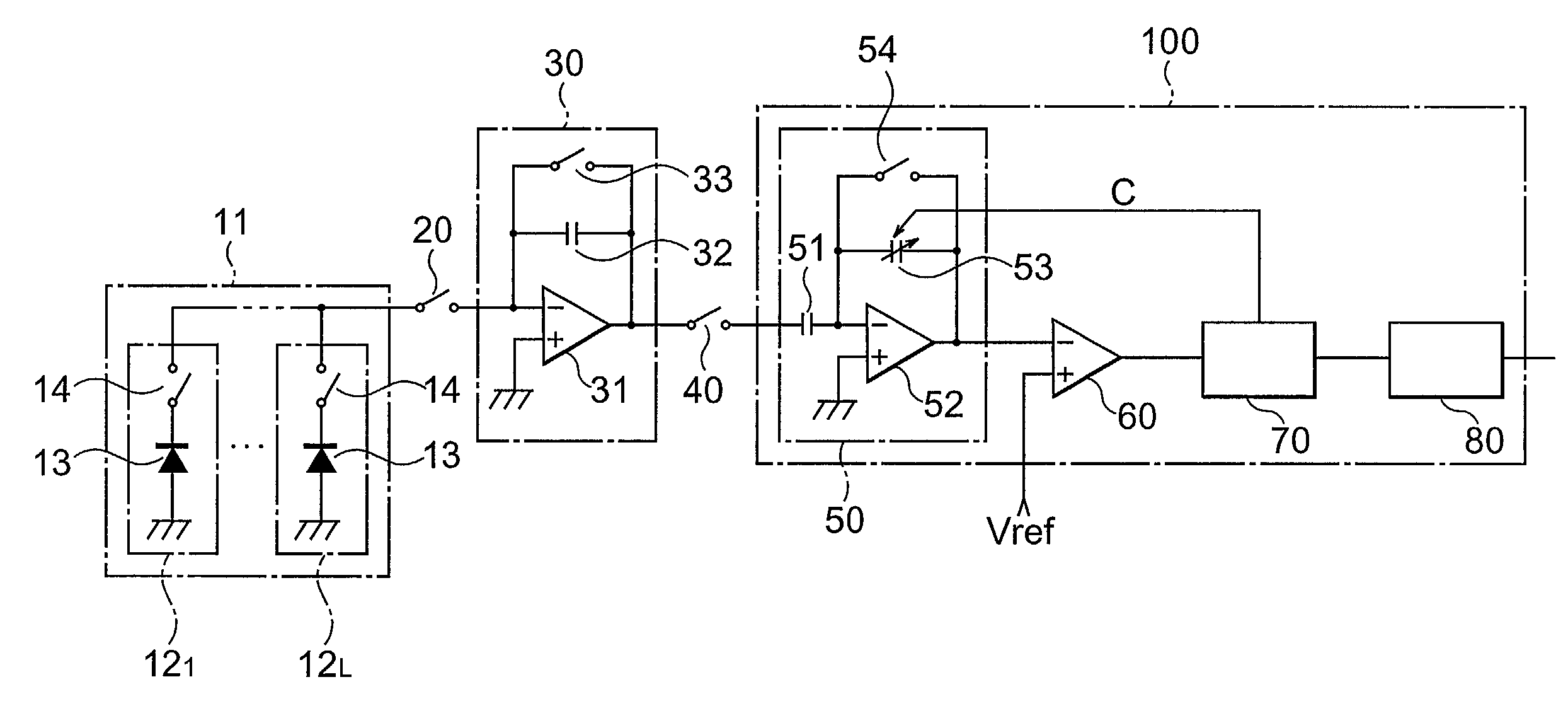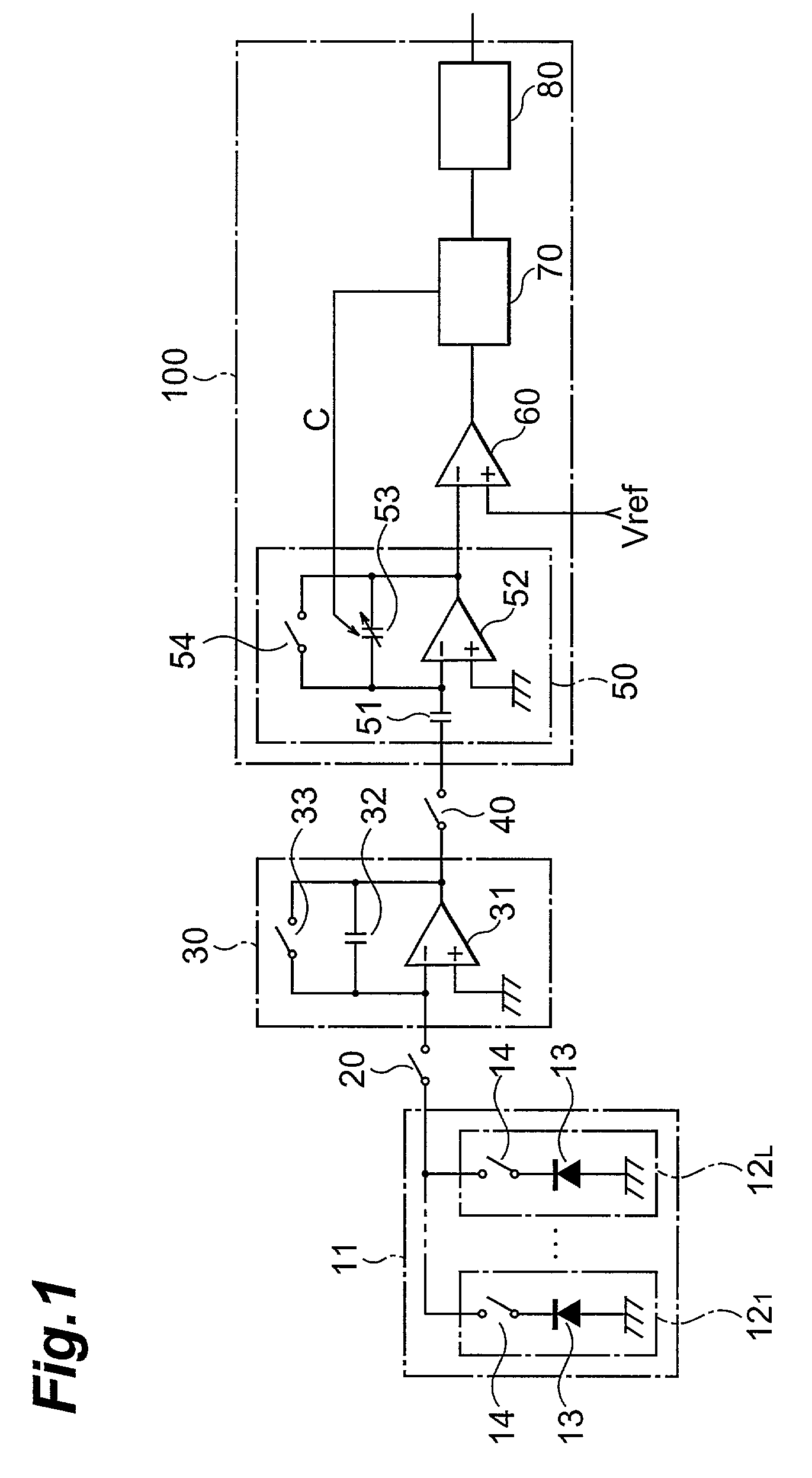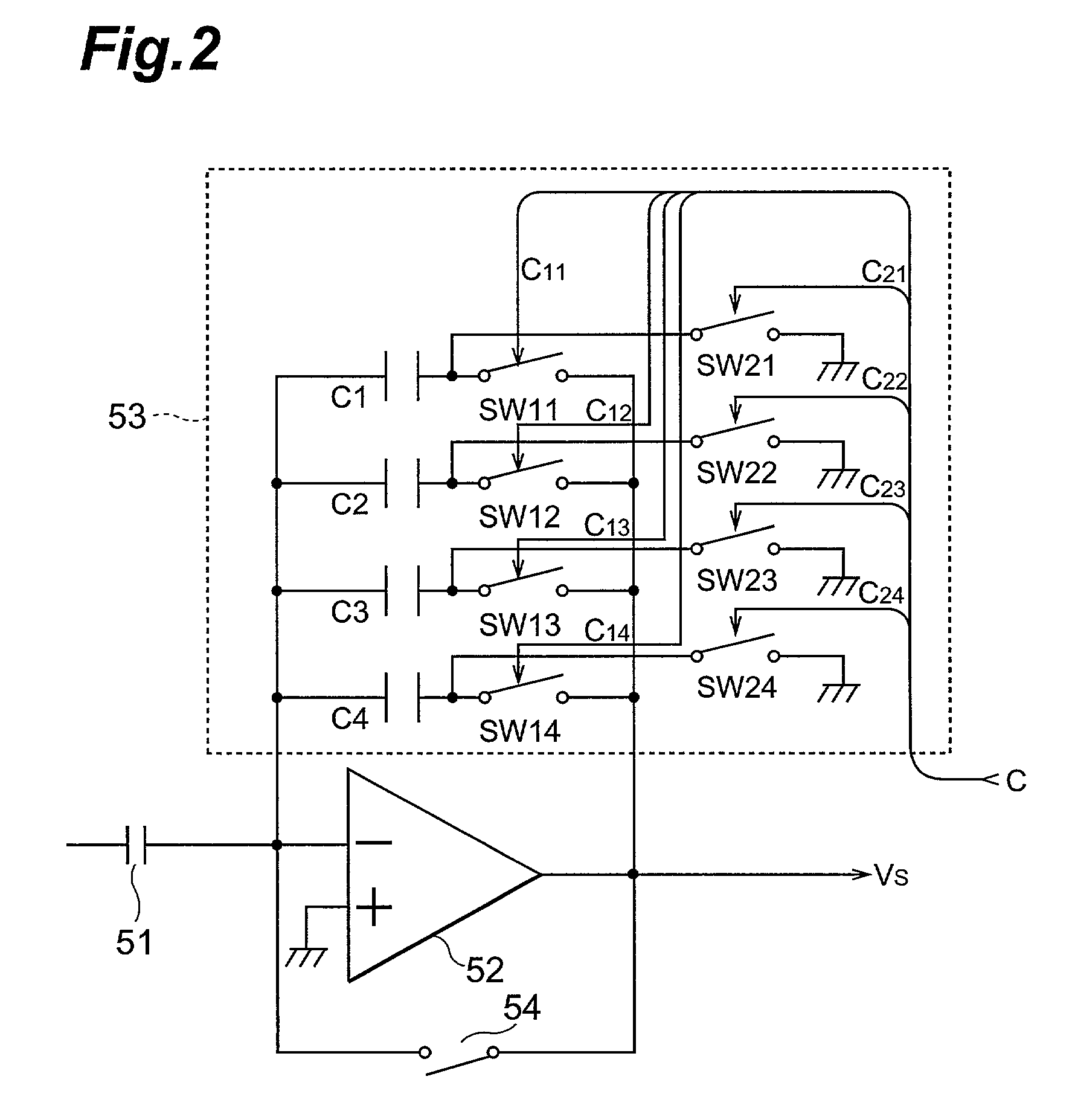Solid-state imaging device
- Summary
- Abstract
- Description
- Claims
- Application Information
AI Technical Summary
Benefits of technology
Problems solved by technology
Method used
Image
Examples
first embodiment
[0022](First Embodiment)
[0023]To begin with, a first embodiment of the solid-state imaging device in accordance with the present invention will be explained. FIG. 1 is a schematic circuit diagram of the solid-state imaging device in accordance with the first embodiment. This drawing shows the configuration of an individual column of a two-dimensionally arranged photodetector array or the configuration of a one-dimensionally arranged photodetector array. In the following, the configuration of an individual column of a two-dimensionally arranged photodetector array will be explained, and the individual column of the photodetector array will be referred to as a vertical photodetective section 11.
[0024]In the vertical photodetective section 11, photodetectors 12i (i=1 to L) are arranged. Each of the photodetectors 12i (i=1 to L) comprises a photoelectric conversion device 13 and a switch 14. Each of the respective photoelectric conversion devices 13 of the photodetectors 12i (i=1 to L) ...
second embodiment
[0058](Second Embodiment)
[0059]A second embodiment of the solid-state imaging device in accordance with the present invention will now be explained. FIG. 5 is a schematic block diagram of the solid-state imaging device in accordance with the second embodiment. The solid-state imaging device in accordance with this embodiment comprises a photodetective unit 10 in which vertical photodetective sections 11j (j=1 to 16) are arranged, switches 20j (j=1 to 16), integrator circuits 30j (j=1 to 16), switches 40j (j=1 to 16), shift register sections 91 to 94, and signal processing units 100j (j=1 to 4). Though the numbers of the vertical photodetective sections 11, switches 20, integrator circuits 30, and switches 40 are 16 each here, they may be provided by a greater number.
[0060]In the photodetective unit 10, photodetectors 12 are arranged two-dimensionally. Namely, in the photodetective unit 10, the photodetectors 12 are arranged in a first direction so as to form a vertical photodetectiv...
third embodiment
[0068](Third Embodiment)
[0069]A third embodiment of the solid-state imaging device in accordance with the present invention will now be explained. FIG. 6 is a schematic block diagram of the solid-state imaging device in accordance with the third embodiment. The solid-state imaging device in accordance with this embodiment comprises a photodetective unit 10 in which vertical photodetective sections 11j (j=1 to 16) are arranged, switches 20j (j=1 to 16), integrator circuits 30j (j=1 to 4), switches 40j (j=1 to 16), shift register sections 91 to 94, and signal processing units 100j (j=1 to 4). Though the numbers of the vertical photodetective sections 11, switches 20, and switches 40 are 16 each, whereas the number of integrator circuits 30 is 4 here, they may be provided by greater numbers.
[0070]In the photodetective unit 10, photodetectors 12 are arranged two-dimensionally. Namely, in the photodetective unit 10, the photodetectors 12 are arranged in a first direction so as to form a ...
PUM
 Login to View More
Login to View More Abstract
Description
Claims
Application Information
 Login to View More
Login to View More - R&D
- Intellectual Property
- Life Sciences
- Materials
- Tech Scout
- Unparalleled Data Quality
- Higher Quality Content
- 60% Fewer Hallucinations
Browse by: Latest US Patents, China's latest patents, Technical Efficacy Thesaurus, Application Domain, Technology Topic, Popular Technical Reports.
© 2025 PatSnap. All rights reserved.Legal|Privacy policy|Modern Slavery Act Transparency Statement|Sitemap|About US| Contact US: help@patsnap.com



